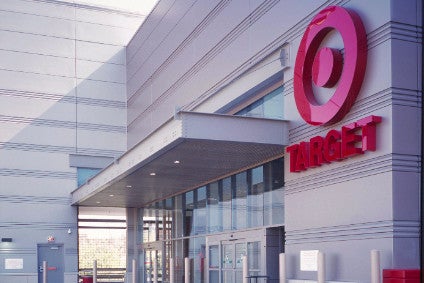
US retailer Target Corp has announced a new set of goals to reduce its carbon footprint – including a new reduction goal for its entire supply chain.
The new objectives increase the impact of previous goals it set in 2017 and set a measurable goal for its supply chain, where 96% of the businesses’ greenhouse gas emissions are produced.

Discover B2B Marketing That Performs
Combine business intelligence and editorial excellence to reach engaged professionals across 36 leading media platforms.
The retailer now says one of the key tasks will be unifying its suppliers around these goals, “whether they’re working with the raw materials that create our products, or they’re manufacturing and transporting those products to our shelves.”
Greenhouse gas emissions are broken down into three categories or scopes: Scope 1 – emissions generated from Target facilities; Scope 2 – emissions from energy purchased to power Target facilities; Scope 3 – emissions generated from the entire supply chain.
Target says it will reduce its absolute Scope 1, 2 and 3 greenhouse gas emissions by 30% below 2017 levels by 2030, and commit that 80% of its suppliers will set science-based reduction targets on their Scope 1 and 2 emissions by 2023.
Specifically, Target says it will work with its suppliers to transition to renewable energy sources and implement their own emissions reduction projects.

US Tariffs are shifting - will you react or anticipate?
Don’t let policy changes catch you off guard. Stay proactive with real-time data and expert analysis.
By GlobalDataIt will also expand its Clean by Design initiative, by partnering with the Apparel Impact Institute to scale programmes that focus on reducing energy use and emissions in suppliers’ factories.
In addition, it plans to leverage the Vietnam Improvement Program (VIP) in partnership with the International Finance Corporation (IFC), which helps local apparel and textile suppliers factories improve their energy and water efficiency and reduce operating costs. Target committed to the initiative in 2017.
The retailer has partnered with industry expert Anthesis to ensure its goals meet the requirements of the Science-Based Target initiative (SBTi). Adding a Scope 3 reduction goal places Target among just a few US companies with SBTi-approved goals to reduce carbon emissions throughout its supply chain.
“Our new climate goals will reduce our carbon footprint from source to shelf, as we work alongside our partners within our supply chain to lower emissions and help create a better tomorrow,” says Brian Cornell, Target chairman and CEO. “We have a responsibility to set high expectations and encourage ambitious reductions in greenhouse gas emissions, promoting positive change throughout the industry to have an even greater impact for generations to come.”





